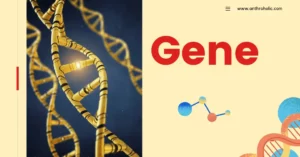AI Answer Evaluation Platform Live Now. Try Free Answer Evaluation Now
Moiety System
Moiety system, while not a universal phenomenon, are a fascinating and integral aspect of social organization in numerous indigenous cultures around the globe. Understanding these systems can provide a wealth of insight into the intricate fabric of human social relations, kinship, and identity.

In essence, a moiety system is a method of social division where a society is split into two complementary parts or ‘halves,’ commonly known as moieties. These halves or moieties serve to structure the society, directing social interactions, marriage rules, and religious responsibilities, to name a few. Perhaps the most significant function of moieties is in regulating marriages, often acting as an exogamous system, wherein individuals are required to marry someone from the opposite moiety. This rule helps to expand social networks, prevent inbreeding, and maintain harmony within the society by forging alliances and reinforcing mutual obligations between different halves of the community.
One of the most illustrative examples of a moiety system is seen in the indigenous cultures of Australia. Among the Aranda people, society is divided into two moieties, each associated with distinct totemic emblems, such as specific animals or plants. These moieties guide marital relations, ensuring that one marries into the opposite moiety, therefore maintaining a balanced exchange of marital partners and preserving social unity. The aforementioned example underscore the moiety system as an ingenious sociocultural mechanism that underpins various aspects of life in these societies. In understanding the role of moieties, we are offered a unique lens to view how societies can organize themselves in a balanced and symbiotic manner.
Moiety System Types
- Exogamous and Endogamous Moieties: Some societies have exogamous moieties, meaning that members of one moiety are required to marry someone from the other moiety. On the other hand, endogamous moieties require that members marry within their own moiety.
- Patrilineal and Matrilineal Moieties: In some societies, moiety membership is inherited through the father’s line (patrilineal), while in others it is inherited through the mother’s line (matrilineal).
- Non-unilineal Moieties: In some cultures, moiety membership isn’t strictly inherited along male or female lines. Instead, it might be flexible or dependent on factors such as birth order, choice, or other cultural rules.
- Productive and Ceremonial Moieties: In some societies, one moiety might be responsible for certain types of work (e.g. hunting, farming) while the other is responsible for ceremonies and religious functions.
- Named and Unnamed Moieties: Some societies have named moieties, often associated with certain animals, plants, or natural elements, while others don’t attach specific names to the moieties.
Conclusion
In conclusion, moiety systems, while diverse and context-dependent, illustrate the complex ways human societies construct and maintain social order. As anthropologists continue to unravel the intricacies of these systems, we may find new ways to appreciate the richness and diversity of human social organization.



